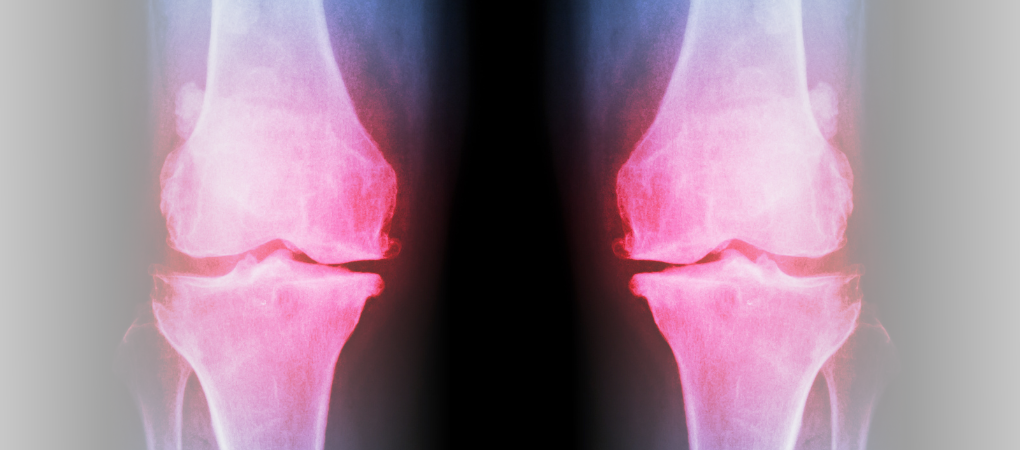Redazione
|
27/09/2022 - Last update 06/12/2022
Turgay Altınbilek, Sadiye Murat, Yasemin Yumuşakhuylu, Afitap İçağasıoğlu | Year 2018
Osteopathic manipulative treatment improves function and relieves pain in knee osteoarthritis
Pathology:
Knee osteoarthritis
Type of study:
Randomized controlled trial
Date of publication of the study’:
2018/Mar/09

Purpose of the study
- Objective: to evaluate the efficacy of OMT, compared to physical exercise, in case of knee osteoarthritis
- Measured outcomes:
• primary: score index of pain, stiffness and function according to the Western Ontario and McMaster University Osteoarthritis (WOMAC), pain according to Visual Analog Scale (VAS) and 50-m walking time
Participants
- Number: 85 people (76 female and 9 male)
- Criteria of inclusion: diagnosis of stage II-III bilateral knee osteoarthritis according to the American College of Rheumatology criteria and the Kellgren and Lawrence classifying system, knee pain for more than 6 months.
- Criteria of exclusion:inflammatory arthritis, soft tissue rheumatism, inflammation in the knees, higher erythrocyte sedimentation rate, high C-reactive protein (CRP), history of knee surgery, trauma (meniscopathy or instability), intra-articular interventions or physiotherapy within the last 6 months, use of anti-inflammatory drugs other than simple analgesics, use of knee braces, vascular or cardiovascular diseases, paresis or neuropathies, intra-articular neoplasms, osteonecrosis, mood disorders, knee flexion contracture.
- Groups of study: 2 groups obtained by randomization
• Group 1: physical exercise with the addiction of OMT, 44 people (39 female and 5 male, mean age 53.9 years)
• Group 2: Physical exercise, 41 people (37 female and 4 male, mean age 55.6 years)
Interventions and evaluations
- Assessment of pain, stiffness and function WOMAC scores, of pain on VAS and of 50-m walking time, at the beginning of the study, immediately after the intervention and 4 weeks after the intervention
- Evaluation of different clinical aspects, including several physical exams and tests (eg, McMurray, anterior drawer, posterior drawer, range of motion), at the beginning of the study, immediately after the treatment and 4 weeks after the intervention.
- Evaluation via IKS and WOMAC scores, 6 and 12 months after the intervention The recruited people were prevented from taking non-steroidal anti-inflammatory drugs from 1 week prior to the study and for its whole course
- 1 intervention session at the clinic followed by the continuation of the therapy at home
- OMT: 3 minutes of mobilization and 3 minutes of compression for bilateral patellofemoral and tibiofemoral joints respectively with one minute interval, plus 2 minutes of lymphatic pump for the extremities of the legs in addition to the exercise program
• these techniques were taught to the patients in order to perform them at home - Physical exercise: 3 sets of 10 repetitions of stretching exercises and strengthening exercises for the thighs and legs’ muscles, twice a week for 4 sessions at the clinic and then twice a day at home
- OMT performed by an osteopathic physician
• adherence to the physical exercise program was evaluated through phone call
Results
- Primary outcomes: After the intervention and at the 4-week follow-up, the OMT group showed a statistically significant greater pain reduction compared to the group with exercise alone. In the same way, OMT resulted statistically significantly in a greater reduction in the 50-m walking time compared to exercise alone With regard to the WOMAC scores, the OMT group had a statistically significant greater reduction in the pain and functional disability indices compared to the group with exercise alone, both after the intervention and at the follow-up. With regard to the stiffness index, OMT proved a statistically significant reduction compared to the same value before the beginning of the study. Although, compared to physical exercise it reported a reduction only at the follow-up.
- Further analyses: statistically significant differences emerged in different physical exams and tests, including swelling and cracking in the knee and patella rubbing, in both groups after the intervention and at the follow-up.
Discussion
OMT is able to make an important additional contribution compared to exercise only in case of knee osteoarthritis, which can also favor a reduction in the use of medications or surgical interventions. The effects of OMT may be due to its direct action on soft tissues’ relaxation, edema reduction, blood flow, lymphatic drainage and mobility promotion .
The review of Osteopedia
By Marco Chiera
Strengths: interesting results due to the use of validated scales at the clinic (WOMAC); articulated statistical analysis.
Limits: not very clear description of how the intervention (OMT and physical exercise) was implemented in the clinic and then carried on by the recruited patients at home; there is no discussion of the limitations of the study.
Although OMT and physical exercise were continued at home, no data are reported on people’s adherence to the treatment, nor is this discussed in the study. Many evaluated parameters are listed but not reported in the results at all; the results are reported in tables not immediately easy to understand.

Are you an osteopath?
Register and enjoy the membership benefits. Create your public profile and publish your studies. It's free!
Register now
School or training institution?
Register and enjoy the membership benefits. Create your public profile and publish your studies. It's free!
Register now
Do you want to become an osteopath? Are you a student?
Register and enjoy the membership benefits. Create your public profile and publish your studies. It's free!
Register now







